| Title of Reference Design | DC/DC LLC Resonant Converter | 100W LLC DC-DC Converter | Interleaved LLC Resonant Converter | Digital LLC Converter | Interleaved LLC DC-DC Converter |
| Image | 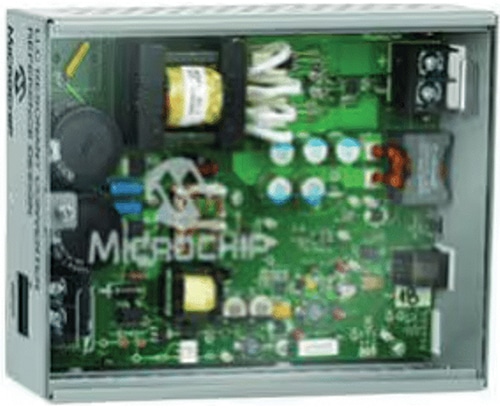 | 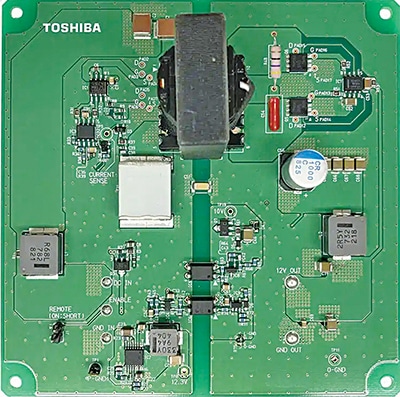 | 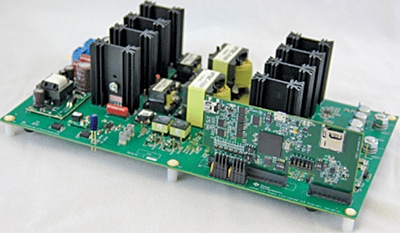 | 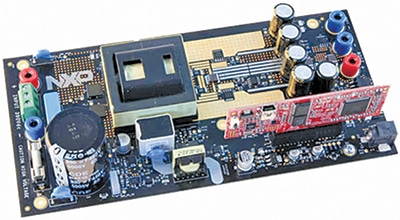 | 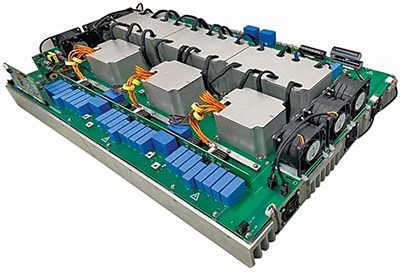 |
| Key Attractions | The 200W DC/DC converter design offers high efficiency, low switching losses, and reliable isolation, featuring full digital control, reduced component needs, and comprehensive monitoring for voltage, current, and temperature. | The 100W DC-DC converter offers an efficient 12V output with an LLC resonant circuit, achieving 88% efficiency, compact design, and enhanced performance through optimised MOSFETs and precise voltage regulation. | The 500W two-phase interleaved converter offers high efficiency, accurate current sharing without extra hardware, and programmable phase shedding, with fault protections to ensure safe and reliable operation. | The 250W high-voltage power supply system offers over 96% efficiency, reliable performance across varying loads, and key features like galvanic isolation, over current and over voltage protection, and flexible monitoring interfaces. | This 60kW reference design features a 3-phase interleaved LLC topology for reduced input current ripple and 98.5% peak efficiency, supporting versatile voltage configurations from 200V to 1000V with adaptable control. |
| Highlights | The 200W DC/DC LLC resonant converter reference design by Microchip simplifies the design process for power conversion. Operating over an input range of 350V dc-420V dc, with a nominal 400V input, this design delivers a 12V DC output while ensuring voltage isolation between the primary and secondary sides. Efficiency is achieved via zero voltage switching (ZVS) on the half-bridge converter and zero current switching (ZCS) on the synchronous rectifier, further enhanced by using a synchronous rectifier instead of a full-wave rectifier. The design allows for switching techniques, such as LLC, achieving up to 95% efficiency and reducing switching losses. Features include low power consumption at no load, programmable soft-start, and monitoring and protection for voltage, current, and temperature. The design incorporates a half-bridge topology, using a resonant tank circuit with a capacitor, an inductor, and an isolating transformer. The transformer’s magnetising inductance eliminates the need for a second inductor, minimising converter size, cost, and complexity, with a synchronous rectifier on the secondary side for efficiency. | The 100W LLC DC-DC converter reference design by Toshiba produces a 12V output using an LLC resonant circuit that switches the high-side and low-side MOSFETs on the primary side at a 50% duty cycle, adjusting frequency to regulate output voltage. The power supply achieves 88% efficiency at full load and has a 110mm x 110mm x 35mm footprint, excluding input and output terminals. MOSFETs and a photocoupler enhance performance and reliability, while the input voltage is stepped down by the LM46000 converter to supply 12V to the LLC controller. Input voltage range is set by external resistors dividing the input voltage to feed the enable pin of the DC-DC converter, which begins switching when this voltage exceeds 2.0V. The gate drive circuit design impacts efficiency and EMI, requiring a balance between the two. Output voltage is determined by external resistors and a shunt regulator, which adjusts the photocoupler current to match the reference voltage based on the divided output voltage. | The TIDM-1001 reference design by Texas Instruments is a 500W digitally controlled, two-phase interleaved LLC resonant converter, featuring a C2000 microcontroller (MCU) to manage operational modes and generate PWM signals for power switches. Its current sharing mechanism ensures accurate current balance between phases without additional hardware, enhancing efficiency and reliability. Delivering 500W—250W per phase, with an input range of 370V to 410V DC and a 12V DC output, the design operates with a resonant frequency of 250kHz and a switching frequency range of 200kHz to 350kHz. With a peak efficiency of 94.5% and efficiency maintained at partial loads, it also features programmable phase shedding for load-based adjustment. Fault protections, including phase and output overcurrent and overvoltage protections, ensure safe operation. The design uses C2000 powerSUITE tools for development and customisation, supported by all the components, which enable power density and reliable operation in power systems, making it suitable for power supply requirements. | The high voltage resonant converter board (HVP-LLC) from NXP Semiconductors, combined with the HVP-KV46F150 controller card, forms a 250W power supply system with a 390V DC input and a 12V/21A output. Utilising GaN switches and a digitally controlled synchronous rectifier, it achieves efficiency over 96% across various loads. Operating at high voltages, the board requires careful handling and is recommended for use in a laboratory environment by individuals experienced in high voltage systems. The drive to improve power density in switched mode power supplies (SMPS) leads to higher switching frequencies, which typically increase switching losses in PWM converters and reduce efficiency. Although higher frequencies enable smaller passive components, they often require larger heat sinks or forced cooling, leading SMPS designers to explore resonant converter topologies to reduce losses. The LLC resonant topology, which includes a transformer, provides additional advantages, such as galvanic isolation and voltage adjustment. Equipped with cooling, digitally controlled synchronous rectification, galvanic isolation, over current and over voltage protection, and interfaces for connectivity and monitoring, it accommodates multiple MCU cards and provides a load switch for step-response tuning. | The CRD-60DD12N-K is a reference design from Wolfspeed. The design uses 1200V silicon carbide MOSFETs and 650V Schottky diodes to optimise performance. Its 3-phase interleaved LLC topology reduces input current ripple and maximises efficiency, reaching 98.5% peak efficiency and a power density of 4.83kW/L. The converter supports an output voltage range of 200V to 1000V, with an adaptive control system operating at switching frequencies from 120kHz to 250kHz. Input voltage is managed from 650V to 900V via an active-front-end AC-DC converter, and the secondary side is configurable in series or parallel, depending on output voltage needs. In parallel mode, the converter delivers output voltages from 200V to 500V DC at varying currents, capped at 60kW, while in series mode, it provides output from 500V to 1000V DC, also capped at 60kW. Operating with air cooling and a CAN interface for PC-based control, this design offers a versatile and efficient starting point for new silicon carbide based systems. |
| Applications | The reference design is suitable for applications needing very low switching losses. | The reference design is suitable for industrial equipment connected to 24V output AC-DC converters and other applications. | The reference design is suitable for EV chargers and central inverters. | The reference design is suitable for industrial power supplies. | The reference design is suitable for EV fast charging, HVDC systems, enterprise servers, telecom infrastructure, and industrial power supplies. |
| OEM Brand | Microchip | Toshiba | Texas Instruments (TI) | NXP Semiconductors | Wolfspeed |
| URL | Click Here | Click Here | Click Here | Click Here | Click Here |
Create an account
Welcome! Register for an account
A password will be e-mailed to you.
Password recovery
Recover your password
A password will be e-mailed to you.
Friday, January 3, 2025



